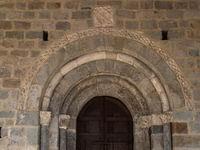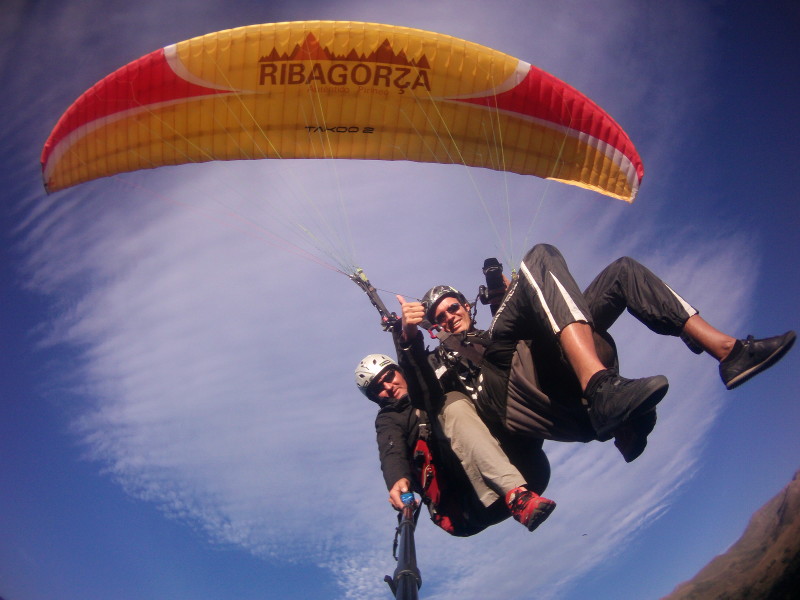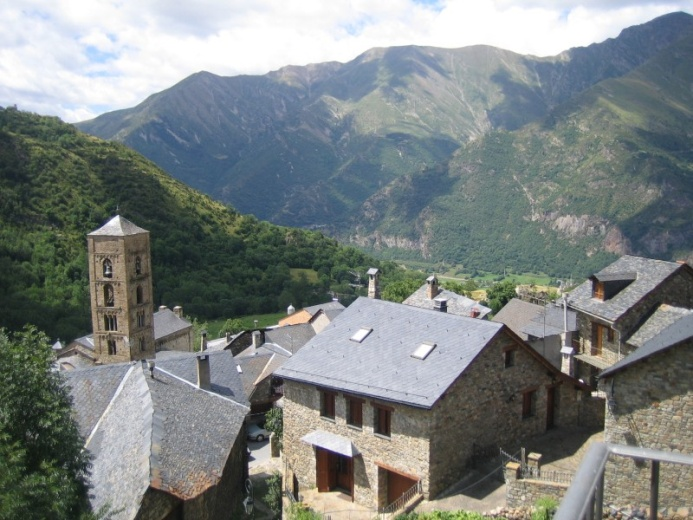It is a village set in the Boí Valley, in the region of Alta Ribagorza, belonging to the province of Lleida, Catalonia, Spain.
It is placed at 1.384 meters of altitude; on the slope of Corronco Mountain. In this area, the river Durro (tributary of Tor's Noguera) and the creek Ravine Curtain come together. It has an extensive town center with popular architecture and slate roofs.
Durro's Nativity
The parochial church of Durro's Nativity, is set in the center of the town, belongs to the Romanesque style and shows us the common denominator of all churches of the valley, the elegant towers such as the style of Saint Clement of Taull.
It is a temple canonically orientated, based on a single nave and cross-shaped floors with two small lateral chapels that finish off in the eastern part in semicircular apse. Similar to the principal nave, the south apse has disappeared, though there are remnants of the profile of its entrance on the ground floor of the tower. The central apse cut off by some reforms, allowsus to still see part of its Lombard workmanship on the south side, based on a series of small blind arches. In front, the sacristy added on limits the vision of the absidal south cylinder, which shows proof of having been redone in its upper area.
The series of blind arches extends along the upper part of the lateral walls of the temple.
The tower, adjacent to the north wall of the church, was raised on the north wing of the transept of the temple, to which today is missing its cylindrical apse. It consists of six typical sections from this valley and the two highest sections have large windows. They have obviously been retouched to adapt them to the opening for the bells. The tower was most likely higher, and the high section, was reduced to half of his original height. It shows signs of having had a large window that today has been filled in.
There is a door at the foot of the south wall, for which we can access the interior, and on the north wall, under a porch is the original front side, which noticeably was constructed with detailed workmanship and is very similar in design and sculptural subject matter to the nearby church of Cardet.
Five semicircular arches, three on the outer area edge intertwined with two intermediate ones, all of them end there curvatures into separate columns on either side of the doorway. On the outside, a folding archway based on a chessboard style molding combined with pieces limestone of clearer colors.
Above the this archway, there is a design made in limestone as well, typical from Huesca. In the upper part, two doves are transporting a holy oil container with their beaks, and in the low ones there are lions with their heads turned. On the sides, there is vegetable decoration.
The capitals that decorate the door, are difficult to meditate in detail, given of the speckled limestone material in which they are carved.
His "veined" shades give a "dirty" aspect to the images impeding its detail. On the outside there are vegetable motifs.
On the inside, to our left side a beast with its head turned towards its stomach area. To the right, there are two lions and a person in the corner whom they seem to lick with their long tongues.
Saint Quirc's Hermitage
The hermitage of Durro's Saint Quirc is on a small steep hillside to the southwest of Durro, the place to which one can access it by a paved path that starts from the square of the church of the Nativitat de Durro and goes to a height of 1.498 m.
Here we can find a ver small but agreeable building of Romanesque origin, composed of the a single nave with a semicircular apse, covered with a canon vault.
Its privileged location offers impressive views of the middle section of the Boí Valley.
Only one loophole shaped window opens in the apse, illuminating the interior from this side. Symmetrically, on the west wall, another small overture allows the entry of light from this side. The door of entry is set on the south wall and it is a simple door of entry that opens under a round arch, without any decoration. The building is formed by medium sized stone blocks, with the incorporation of some large pieces placed at the base. The building demonstrates some characteristics of a Romanesque construction of the 12th century.
|

01. Exterior view of the chapel, with the panoramic view can be enjoyed from the place.
|
|

02. View from the southeast
|

03. Header
|
|

04. View from the southeast
|

05View from the southeast
|
|

02. View from the southweast
|

07. Western Facade
|
|

08. Gateway
|

09. Apse window
|
Mountain Activities
-
Mountaineering
-
Hiking, with several itineraries from the village
-
Corronco de Durro 14.22 km
-
Mountain biking, routes such as:
-
Durro's Pinegrove
-
the Cultia
Adventure Activities: Paragliding from Durro
Flight with two-seater paragliding with a height change of 1000 m.
The activity starts with a takeoff in Durro and finishes with the landing in Barruera.
The approximate duration of the flight is 20 minutes and of the whole activity, 75 minutes.
























